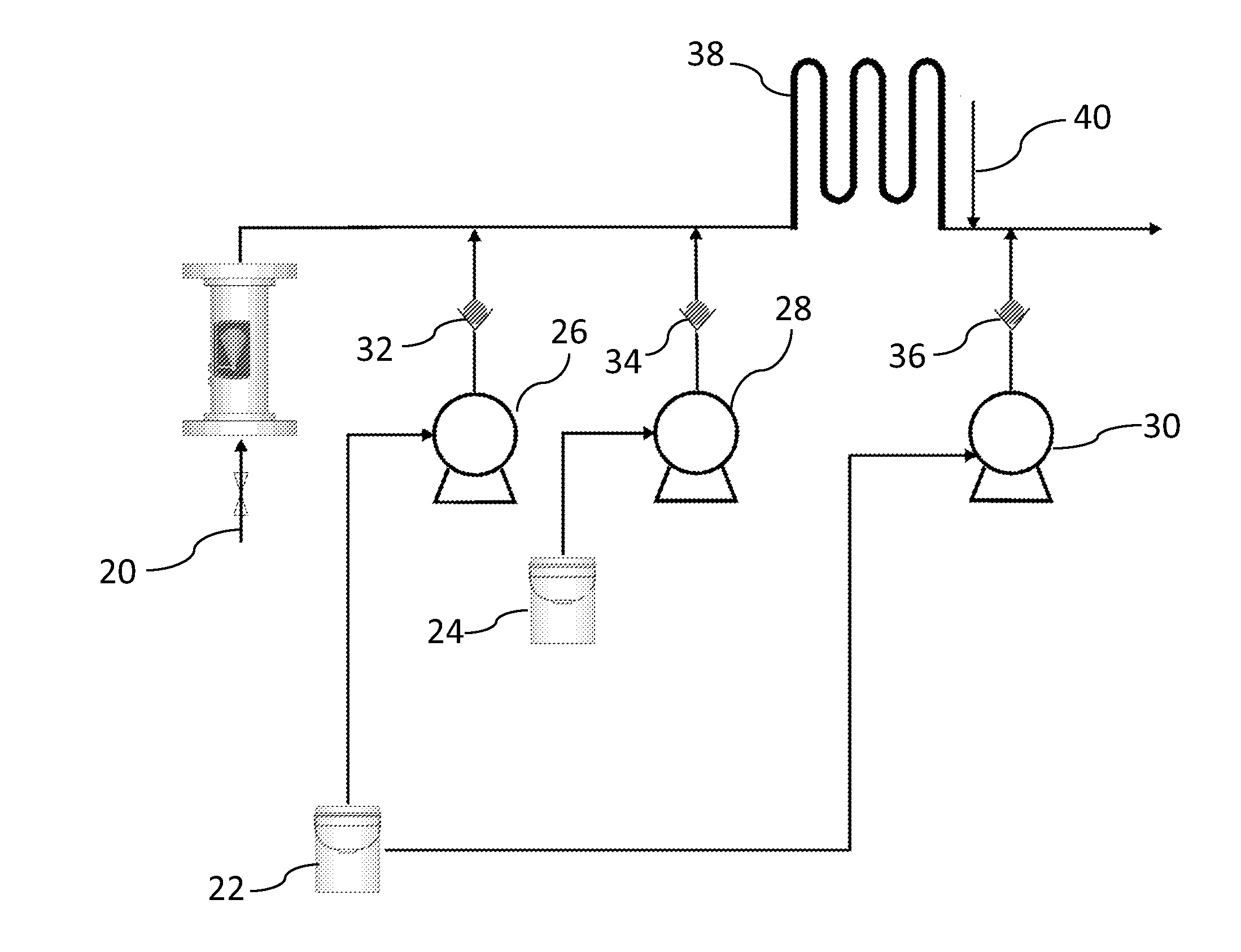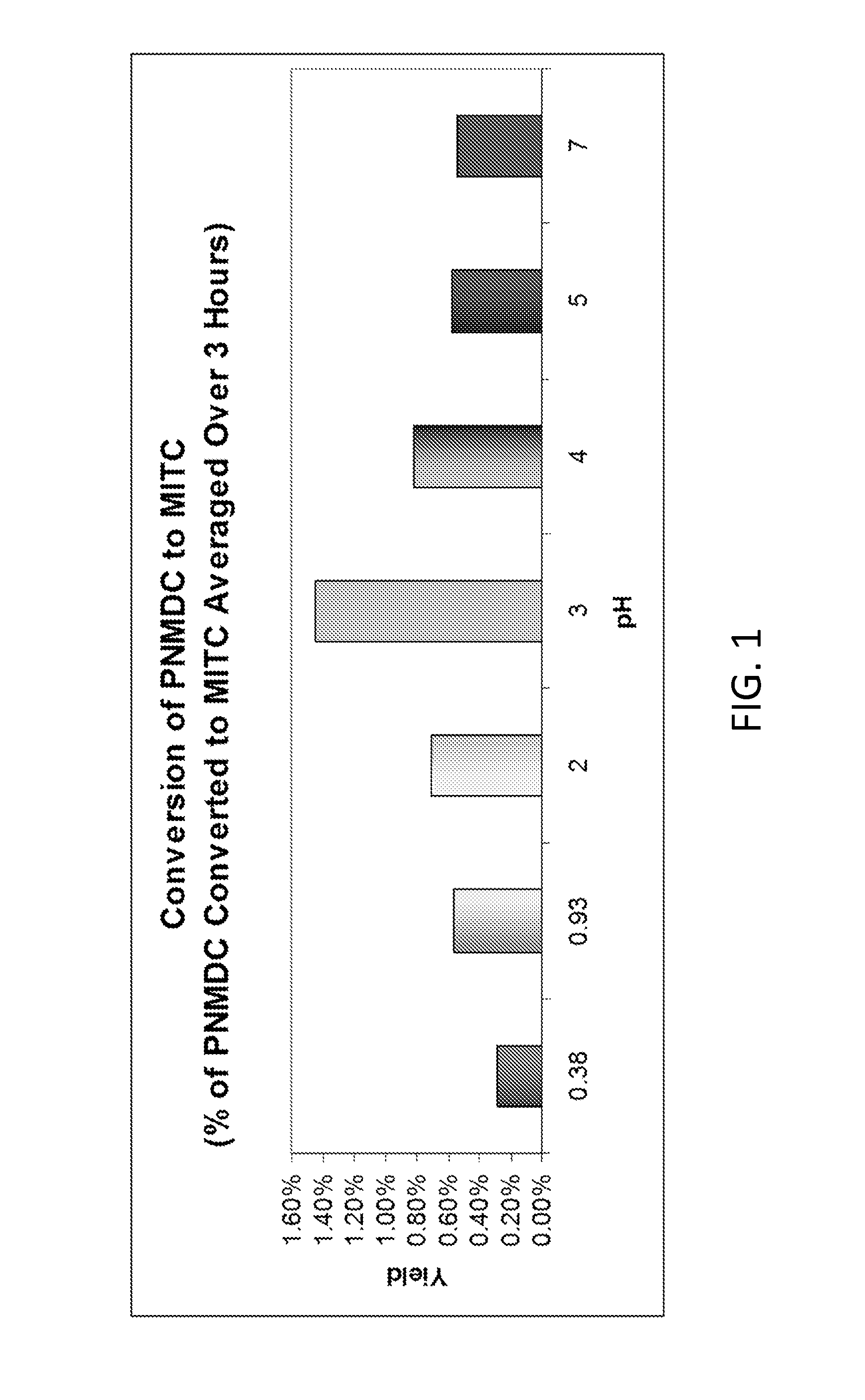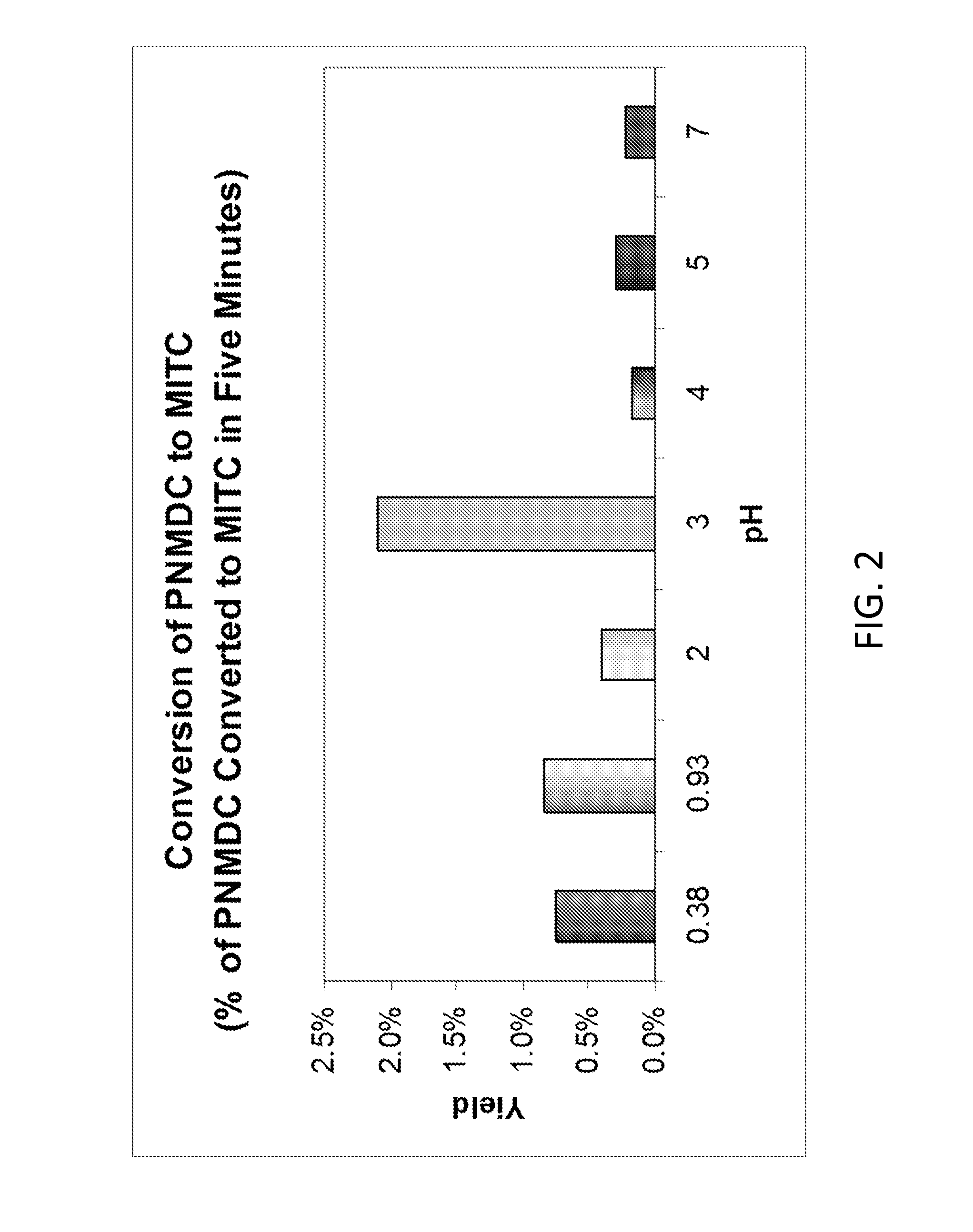Method And Apparatus For The Enhancement Of The Biocidal Efficacy Of Monoalkyldithiocarbamate Salts
a monoalkyldithiocarbamate and biocidal technology, applied in the field of biocides, can solve the problems of difficult to achieve high-efficiency use, and inability to meet the requirements of use, etc., and achieve the effect of effectively using mitc or similar biocides
- Summary
- Abstract
- Description
- Claims
- Application Information
AI Technical Summary
Benefits of technology
Problems solved by technology
Method used
Image
Examples
examples
[0051]BUSAN® 40 is a 32.5% solution of potassium N-methyldithiocarbamate (PNMDC). Biocidal performance of the product was tested to develop a technique to generate a reproducible level of MITC in a dilution of BUSAN® 40. A biocide feed system was designed to provide MITC, for a rapid kill, along with PNMDC that will slowly decompose to form additional MITC and provide longer-term biocidal activity.
[0052]The rate and extent of conversion of PNMDC to MITC was found to be strongly affected by pH. While good conversion can occur over a range of pH values, the results shown in FIGS. 1 and 2 indicate an optimum conversion occurring at about pH 3 (e.g., 2.5-3.5).
[0053]The acids tested were selected from those that are already approved by the EPA as inert ingredients for biocidal products. TABLE 1 below lists the acids tested and their respective properties.
TABLE 1pH.of 0.1MSolubilityAcidpKaSolutionin WaterBenzoic Acid4.212.610.34% Acetic Acid4.762.88MiscibleCitric Acid (1)3.092.0642%Citric...
PUM
| Property | Measurement | Unit |
|---|---|---|
| wavelength | aaaaa | aaaaa |
| wavelength | aaaaa | aaaaa |
| pH | aaaaa | aaaaa |
Abstract
Description
Claims
Application Information
 Login to View More
Login to View More - R&D
- Intellectual Property
- Life Sciences
- Materials
- Tech Scout
- Unparalleled Data Quality
- Higher Quality Content
- 60% Fewer Hallucinations
Browse by: Latest US Patents, China's latest patents, Technical Efficacy Thesaurus, Application Domain, Technology Topic, Popular Technical Reports.
© 2025 PatSnap. All rights reserved.Legal|Privacy policy|Modern Slavery Act Transparency Statement|Sitemap|About US| Contact US: help@patsnap.com



